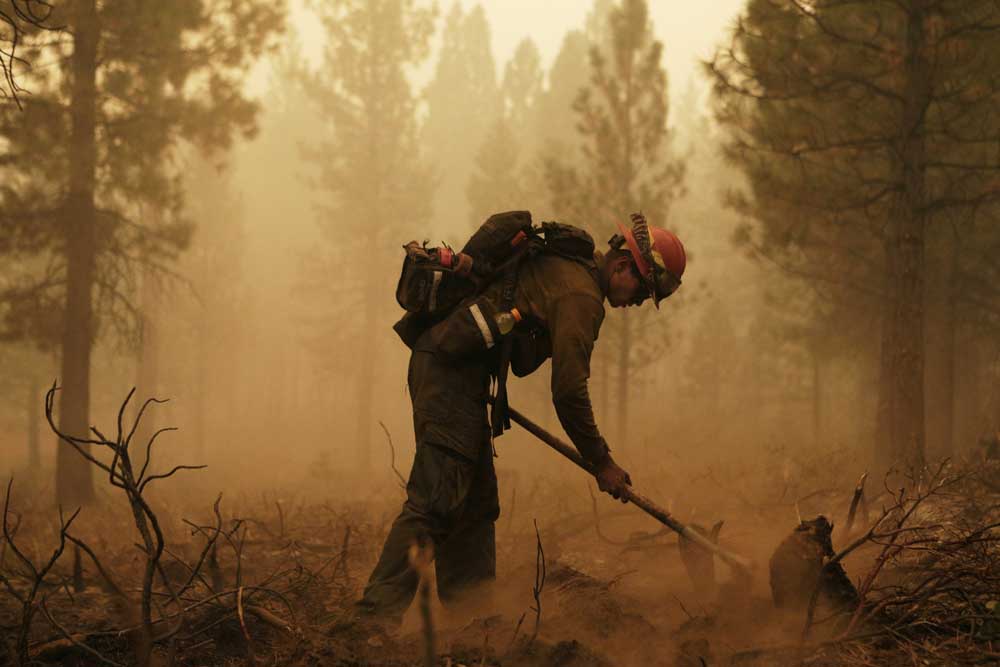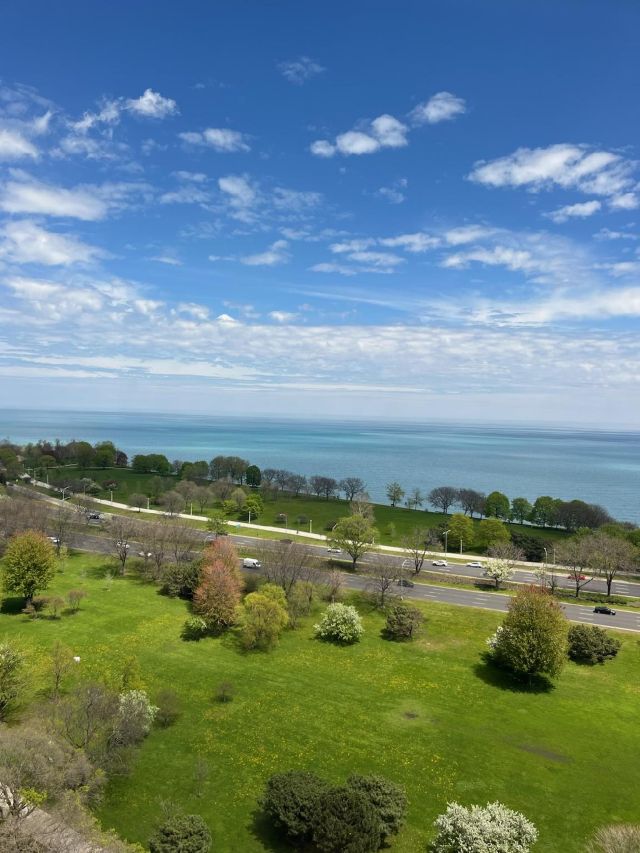Firefighters battle blazes without protection
Published 11:58 pm Friday, September 22, 2017

- Firefighter Dillon Winters extinguishes hot spots along the perimeter of the Milli Fire in Sisters on Tuesday, Aug. 29, 2017. (Joe Kline/Bulletin photo)
Every now and then when Brock Shelton is out fighting a wildfire, the wind will shift suddenly, making it hard to breathe. His eyes will start to water.
“You’ll go from breathing clean air to all of a sudden you’re like, ‘Oh man, I better get out of here,’” said the 22-year-old wildland firefighter, who is in his third year of working for the U.S. Forest Service.
Oregon fires are keeping the Pomeroy, Washington, resident busy. He’s worked the Milli Fire, the Nash Fire and several others.
In between 16-hour shifts, Shelton posts photos on Facebook of him and his crew. They’re mostly young men in their early 20s wearing yellow button-up shirts and hard hats, their faces streaked with black soot.
Despite spending hours upon hours around contaminant-filled smoke, most wildland firefighters do not wear any form of respiratory protection on the job. That’s because a device that would truly protect them doesn’t exist.
In order for the U.S. Forest Service to give its workers respirators, the National Institute for Occupational Safety and Health would first need to certify a device specifically for wildland firefighting. Despite NIOSH’s call for candidates in 2012, no such device has been approved.
Instead, crews rotate in and out when conditions are especially dangerous, and firefighters are taught to recognize the signs of smoke exposure. It’s a striking contrast from structure firefighters, who typically wear breathing masks attached to tanks of compressed air.
For wildland firefighters, it would be impractical to haul around a tank while they’re hiking uphill, digging lines or clearing brush. Structure firefighters are more stationary, and research has shown the smoke they’re working in — loaded with chemicals from furniture and other household items — can be more dangerous than wildfire smoke.
Even sophisticated N95 respirators, while protective against the particulate matter in smoke, don’t filter out common wildfire air contaminants like acrolein, formaldehye and carbon monoxide.
Wearing them could prompt increased exposure to harmful contaminants if firefighters assume they’re protected, said George Broyles, fire and fuels project leader with the U.S. Forest Service’s National Interagency Fire Center in Boise, Idaho.
“That would give them basically a false sense of security,” he said, “because they’re still impacted by the gases that can permeate those respirators, which could have a profound effect.”
For his part, Shelton said he doesn’t worry about the health effects. That’s because he knows when to get out.
“At the point when you’re just breathing smoke, you’re not really fighting fire and you’re not really being useful,” he said. “You’re just choking on smoke.”
Particles in the air
There’s a lot of research detailing the effects of structure firefighting on a person’s health. One of the largest on the subject followed about 19,300 career firefighters between 1950 and 2009. By the end, 2,600 had developed cancer and of those, 1,300 had died as a result. Authors of the study, published in the journal BMJ in 2015, found lung cancer and leukemia deaths increased relative to fire exposure.
Less is known about how wildland firefighting affects people longterm. A 2016 review on the subject published in the journal Inhalation Toxicology concluded that while there is evidence the work has acute respiratory effects, it’s uncertain whether it has longterm respiratory or cardiovascular effects.
The review, which included 13 studies on the health effects of wildland firefighting, was funded in part by the U.S. Forest Service, although its authors wrote that did not impact their outcome.
Olorunfemi Adetona, a study author and assistant professor of environmental health sciences in Ohio State University’s College of Public Health, said at least 90 percent of the firefighters working in the country are structural. Those firefighters are easier to study than wildland firefighters because they tend to stay with the same employers longer and their exposure to fires is more frequent.
Adetona said there needs to be more research into the longterm effects of wildland firefighting.
“What happens over the long term? Nobody knows,” he said.
Federal Occupational Safety and Health Administration rules, including those designed to protect firefighters, apply to agencies like the Forest Service. OSHA typically requires employers to provide respirators if their workers are exposed to contaminants that exceed certain levels over the course of an 8-hour work day.
That doesn’t apply if the workplace is a wildfire, however, as contaminant levels vary widely depending on fire intensity, said Cory Stengel, a health consultant for Oregon OSHA. Oregon OSHA does not regulate Forest Service workers, but it does oversee private contractors and state employees. Oregon OSHA is satisfied with the assurance that fire crews are trained to recognize when to leave an area because exposure levels are dangerous, Stengel said.
Unlike other workplaces, Oregon OSHA does not perform random safety inspections of active fire scenes. The agency would, however, investigate firefighter complaints. A spokesperson said he was not aware of any.
Safer than the old days
Structure firefighters, by contrast, are tightly regulated by Oregon OSHA, right down to the safety equipment they’re required to wear, said Mike King, a fire captain with Bend Fire and head of its respiratory protection committee.
Bend Fire responds to wildland fires in addition to structure fires. When it does, firefighters wear N95 respirators, King said.
Over the years, municipal fire departments like Bend Fire have focused increasingly on the safety of their workers, a trend driven in part by accumulating research on the dangers they face.
The dangers aren’t just in research. The department has had firefighters die of cancer within a year of retiring, said Dave Howe, Bend Fire’s battalion chief of administration.
“It’s because they’ve breathed a lot of that stuff and never protected themselves,” he said. “We want those days to go away.”
In the old days, no one used to wear gloves. Now, it’d be unheard of not to. Bend firefighters used to enter smoking buildings unprotected. Today, they wear respirator masks.
Oregon OSHA’s Stengel worked as a wildland firefighter as a college student in the ’80s. The focus was on the task at hand, not on health.
“There’s times, I will admit, when you come off the fire line and you get in the shower and your pores are filled with soot and you blow your nose out and black stuff comes out and you think about it,” he said, “but back when you’re young, if it doesn’t knock you over, you don’t give it too much concern.”
Even today, not all departments make their workers wear full masks and tanks, called self-contained breathing apparatuses, like Bend Fire does. The law doesn’t require the equipment, but King said departments are moving in that direction.
Over the years, bravado has kept firefighters from focusing on safety, King said.
“It was kind of considered a badge of honor to see how much smoke you could take,” he said. “Our air packs were considered kind of wimpy.”
Both King and Howe said they think wildland firefighting will eventually catch up to structure firefighting when it comes to respiratory protection.
But that will require improvements in equipment. The Federal Emergency Management Agency currently has a call out for agencies to develop a respirator that meets wildland standards.
For his part, Shelton, a recent college graduate, doesn’t plan on stopping any time soon.
He hopes to join a hot shot crew and stick with it “as long as I can ride it out and my body lets me do it.”
—Reporter: 541-383-0304,
tbannow@bendbulletin.com






